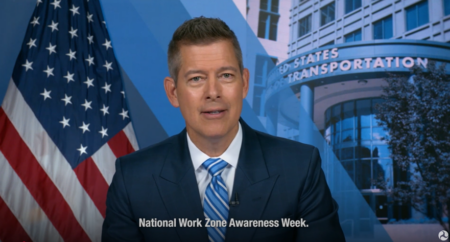In his latest column Greg Winfree, JD, agency director of the Texas A&M Transportation Institute, takes a look at the latest research into the practical safety of crash barriers in a new era of heavier cars being ushered in by EVs with large batteries
In 1934, General Motors (GM) performed the first-ever barrier impact and rollover testing for roadside infrastructure. Until those tests, the need for improved mobility – not safety concerns – drove vehicle innovation. Based on GM’s groundbreaking work, current standards that maximize safety with the help of a “forgiving roadside” have been tested and re-tested, saving millions of lives. Now, 90 years later, we’re amid a new revolution.
As prices come down and charging stations go up, EVs are more ubiquitous every day. Texas, where I live, has more than 200,000 EVs on the roads. The company Virta, which markets its digital EV charging platform globally, estimates that 26 million EVs existed worldwide in 2022.
“The infrastructure standards pioneered by GM’s testing nearly a century ago are insufficient when EVs crash”
If the Announced Pledges Scenario, which aggregates all countries’ goals to reduce carbon emissions, is realized, that number could climb to nearly 600 million by 2035.
Okay, enough with the statistics. Aren’t more EVs a good thing for the environment? Absolutely. But here’s the thing – current roadside safety standards were designed to mitigate crashes involving internal combustion engine (ICE) vehicles, not EVs.
In June 2024 and building on research by the University of Nebraska–Lincoln, the Texas A&M Transportation Institute (TTI) Roadside Safety and Physical Security Team crashed a Tesla Model 3 into a heavy-duty guardrail at 62mph. Had it been an ICE vehicle, repeated testing shows the barrier would have held. The EV’s results were stunning: it blew right through the barrier. (You can watch the test in the video below)
In the real world, the car would have plunged off a cliff or plowed into oncoming traffic. Why did the barrier fail? EVs require heavy battery packs, have a lower center of gravity, and use heavier construction materials than ICE vehicles. These characteristics create unprecedented safety concerns. In short, the infrastructure standards pioneered by GM’s testing nearly a century ago are insufficient when EVs crash.
Roadside safety must evolve to meet the challenges posed by EVs. It’s imperative that we conduct new, rigorous research to come up with specifications appropriate for EVs, ICE vehicles, and other technologies being introduced onto our roadways. And because this is a concern around the world, it is essential that a global awareness c ampaign is developed to create, codify, and communicate them.
Sales and registrations of EVs are on the rise. Electric vehicles improve mobility while protecting the environment by reducing greenhouse emissions. But to protect passengers, we need to fund new research that accounts for the specific challenges that new technologies often present to ensure our global safety infrastructure continues to perform as designed and save lives. Today. Right now.
This article was first published in the December 2024 edition of TTi magazine





